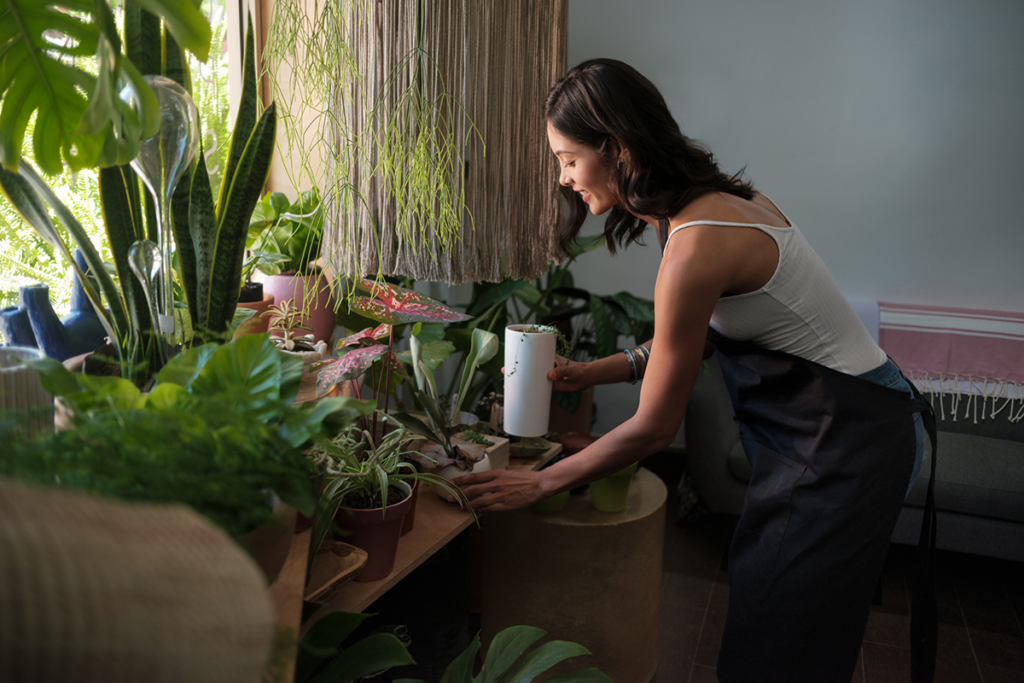Now more than ever, people are understandably quite concerned about the air in their home being pure and clean from contaminants.
You’ve probably heard more about air filters, humidifiers, dehumidifiers, purifiers, germicidal lamps, etc. as tools to improve IAQ , more so than homegrown natural solutions.
However, both approaches/tools, especially when paired, are proven to be very successfully in transforming the air in your home to be the cleanest it possible can be.
A Green Thumb Can Help You Breathe Easier
You can use plants to increase the air quality in your home to combat microbial growth and airborne illness. At first blush, this may seem like an obvious thought. After all, plants produce oxygen. But did you know that indoor plants also absorb toxins?
In fact, plants can actually get rid of the bulk of the pollution in your home all by themselves!
That’s because most of this pollution is from building materials like paint pigments and lead, and even from your own home furniture. Yep, unfortunately, your furniture is often sloughing off dangerous “volatile organic compounds” (VOCs). From carpeting to cabinets, most consumer products have these VOCs, such as formaldehyde.
And even if we could switch to all organic home décor, and live somewhere with no synthetic materials in the building, we would still have all our dangerous cleaning products, toiletries, etc., which release harmful toxins in the air.
You might wonder, “Is this really all that dangerous?”
Well, first of all, if you breathe in too much formaldehyde, it can actually cause an allergic skin reaction, but more likely it will just irritate your throat and possibly cause headaches. It can also cause asthma. Another common toxin, benzene, does the same thing.
In higher amounts, according to lung.org, some VOCs can actually cause cancer in the long run.
To combat this, we recommend indoor air quality products and services, such as ultraviolet (UV) lights, which have been proven to neutralize VOCs.
But let’s get back to talking about plants, plants, and more plants! And, not just any plants.
Through the NASA Clean Air Study, NASA researched different species of plants to see which ones would best clean the air in the space station. Their goal was not only to release more oxygen, but also to remove VOCs like formaldehyde and benzene. Feel free to take a look at the comprehensive results of the Clean Air study, but we’ve also summarized it for you below.
All 31 of the plants tested during and after the study do get rid of formaldehyde. But there are only a few that get rid of all of these VOCs:
– formaldehyde
– benzene
– trichloroethylene
– xylene
– toluene
– ammonia
These plants are the peace lily, parlor palm, lady palm, and the florist’s chrysanthemum. Of course, that doesn’t mean these are the only plants worth growing in your home.
When it comes to more common plants that are still effective, the aloe vera plant and bamboo palms, get rid of formaldehyde and benzene.
We definitely encourage you to check out the plants on that NASA Clean Air Study list! We also encourage you to check out our UV germicidal lamps. While plants may be quite effective for removing VOCs, they can’t neutralize bacteria and viruses the way UV lamps can.



